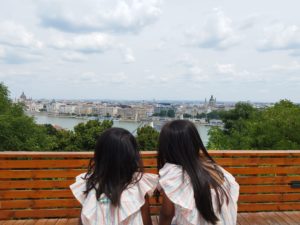For a Moment, ICE Froze the American Dream

By Urbashee Paul – Urbashee is now an economics PhD candidate at Northeastern, where she is researching the impact of US immigration law changes on the American and international labor markets.
On July 6, 2003, my family immigrated to the United States on F-1 and F-2 student visas, set on pursuing the American dream through acquiring the world’s best education. Fast forward exactly 17 years, and the prospect of pursuing this same American dream appeared increasingly bleak for international students. On Monday, July 6, ICE announced that international students who are attending universities that have elected to operate remotely in the fall must return to their home countries or transfer to a school offering in-class instruction.
In light of this announcement, Harvard and MIT filed a lawsuit arguing that the directive violated the Administrative Procedure Act, which requires the Court to hold unlawful and set aside any agency action that is “arbitrary, capricious, [or] an abuse of discretion”. Indeed, ICE offered no notice nor good cause for their policy and thereby dismantled months of meticulous planning conducted by university administrators on the safest ways to reopen campuses in wake of the COVID-19 pandemic and the recent resurgence of cases. In the following days, over 200 universities, tech companies, and attorney generals of at least 17 states joined forces with Harvard and MIT to dissent ICE’s reckless policy.
Their efforts yielded a victory. Yesterday, in a fortuitous turn of events, the U.S. Department of Homeland Security agreed to rescind the directive that would have banned thousands of international students from remaining in the US while taking online courses.
Absent rescission, the July 6 directive would have resulted in wide repercussions for not only students, but also the US economy. As the original lawsuit points out, the policy placed universities in “the untenable situation” of either moving forward with their carefully designed online learning platforms – or attempting, “with just weeks before classes resume, to provide in-person education despite the grave risk to public health and safety that such a change would entail.” Universities electing to remain remote for the fall semester would, in effect, be offering students no choice but to transfer to another program (practically impossible with just weeks before the fall semester) or expose themselves to the imminent risk of contracting COVID-19 on their transoceanic flights (unaffordable for many students on such short notice) to their home countries.
As of the 2018-19 academic year, approximately 8,249 Bangladeshi students are studying in the US. A large number of these students would have had no recourse but to return to Bangladesh, where health insurance is a luxury few can attain, hospitals are ill-equipped, and most homes don’t have any internet connectivity.
Students from China and India, who make up a majority of the US international student body, would have faced numerous challenges that would have undoubtedly impeded their educational experience – among them internet censorship and a massive time zone adjustment. Additionally, those obtaining STEM degrees – a significant proportion of students from China and India – who rely on labs for research during the academic year would simply have not been able to proceed with their work.
ICE’s myopic policy would also have had consequences for the US economy. In the 2018-19 academic year, international students contributed $41 billion to GDP and supported 458,000 jobs. International students are ineligible for federal aid and rarely earn domestic scholarships. In fact, they typically pay above the price tag for US education, when accounting for foreign student fees. As such, universities often rely on international students for a sizable portion of their revenue. International students also contribute heavily to US rental markets, offering a steady source of income for US homeowners even when school is not in session. After graduating, students on the F-1 visa oftentimes acquire H-1B visas through US employment and become a driving force behind US innovation and technological growth.
International students come to the US with high ambitions, dreams of a better life, and the capacity to contribute immensely to the rich tapestry of American society with their intellectual capital and hardworking ethic. In closing our doors to the world’s brightest minds, the Trump administration could have endangered the competitiveness of the US education system and extinguished the American dream for thousands. We are fortunate that, for now, international students may continue to call the US their home away from home.
Read More
The Legacy of Boi Mela
Every year in February, the month-long national book fair welcomes...
Read MoreMillennial Amma: How to Explain a Global Crisis As a Parent
Rumki Chowdhury shares tips for how to talk to children...
Read MoreBegum Rokeya’s Millennials
A tribute to a pioneering Bengali feminist writer, educator and...
Read More



